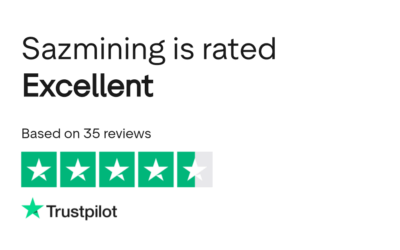The world of finance is constantly evolving, and one of the most anticipated events in the investment landscape is the Initial Public Offering (IPO). An IPO investment is a pivotal moment in a company’s journey as it transitions from being privately held to offering its shares to the public.
Índice
Understanding IPOs: The Basics and Beyond
An Initial Public Offering (IPO) represents a significant juncture in a company’s life cycle, marking its transition from being privately held to becoming a publicly traded entity. This pivotal event not only shapes the company’s financial landscape but also captures the attention of investors, financial experts, and the general public.
At its core, an IPO is a financial maneuver that enables a privately owned company to issue shares to the public for the first time. This strategic move effectively transforms the company’s ownership structure, as ownership shares are no longer restricted to a select group of investors, such as founders, employees, or venture capitalists. Instead, these shares become available for purchase by individuals, institutional investors, and anyone who wishes to participate in the stock market.
The decision to initiate an IPO is not a trivial one. It is often motivated by a company’s aspiration for growth and expansion. Going public provides the company with access to a substantial pool of funds that can be channeled into various avenues. These include:
- Capital Injection: By offering shares to the public, a company can generate substantial capital that can be used to fund a range of initiatives. This capital can be pivotal for financing research and development, expanding operations, or venturing into new markets.
- Debt Reduction: Companies grappling with debt burdens can use the funds from an IPO to pay off loans and mitigate their financial liabilities. Debt is a financial obligation that companies incur to fund operations, expansion, or other initiatives. While debt can be a useful tool for growth, excessive debt levels can impose a significant burden on a company’s financial health.
High interest payments and principal repayments can limit a company’s flexibility, drain resources, and impede its ability to invest in strategic opportunities. - Acquisitions: Access to public capital markets empowers a company to acquire other businesses, potentially fueling its growth and diversification strategies. An acquisition involves one company purchasing another, either to enhance its market position, gain access to new technologies, expand its product offerings, or achieve other strategic objectives. Acquisitions can be transformative, allowing companies to rapidly scale their operations and establish a more comprehensive market presence.
The IPO Process Unveiled
The journey from a private entity to a publicly traded company is a multifaceted process, involving meticulous planning, rigorous documentation, and regulatory adherence. The stages of the IPO process typically encompass as the table presents below:
| Stage | Overview |
|---|---|
| Collaborating with Investment Banks | Companies seeking to go public collaborate with investment banks who play a pivotal role in orchestrating the IPO. |
| Regulatory Approvals | Companies must obtain regulatory approvals before their shares can be listed on a stock exchange |
| Crafting the Prospectus | The prospectus outlines essential information about the company, including its business model, financials, and risk factors. |
| Underwriting | Investment banks assume responsibility for purchasing the shares from the company and offering them to the public |
| Roadshows and Investor Outreach | Companies may embark on roadshows involving presentations and meetings to generate investor interest. |
| Pricing and Allotment | The final price at which the company’s shares will be offered to the public is determined. |
| Listing on the Stock Exchange | Once the shares are priced and allocated, they are listed on a stock exchange and made accessible for public trading. |
How to Invest in IPOs: A Step-by-Step Guide
Investing in IPOs requires a systematic approach to ensure a smooth experience. Here’s a step-by-step guide to investing in IPOs:
1. Stay Informed
Keep an eye on news and announcements regarding upcoming IPOs. Financial news sources and investment platforms often provide information on companies preparing to go public.
Keeping a vigilant eye on news and announcements related to upcoming IPOs is akin to having a preview of potential investment opportunities. By staying informed, you position yourself to:
- Identify Opportunities: Recognize companies that are preparing to go public and assess whether they align with your investment goals and strategy.
- Conduct Research: Being aware of upcoming IPOs allows you to initiate your research process early. This gives you more time to thoroughly analyze the company’s prospects, financials, and industry trends.
- Plan Ahead: Anticipating upcoming IPOs enables you to plan your investment strategy and allocate resources accordingly.
Several sources provide insights into companies preparing to go public:
- Financial News: Reputable financial news outlets often report on upcoming IPOs. These reports highlight key details about the company, the industry it operates in, and its potential impact on the market.
- Investment Platforms: Many investment platforms offer information about upcoming IPOs to their users. These platforms may provide alerts, notifications, or dedicated sections that list companies going public.
- Company Announcements: Companies planning to go public often issue press releases or announcements to communicate their intentions. These announcements may provide insights into the company’s growth strategy and financial performance.
2. Open an Account
Ensure you have an investment account that allows you to participate in IPOs. Some brokerage platforms offer IPO access to eligible investors.
3. Review the Prospectus
The prospectus provides essential information about the company’s financials, risks, business model, and use of proceeds. Review it thoroughly before making investment decisions.
The prospectus is more than a mere collection of words; it’s a meticulously curated source of insights into the company that’s going public. This document provides essential information that helps you understand the company’s:
- Financials: Delve into the company’s financial statements, including revenue, expenses, profitability, and cash flow. This section offers a comprehensive view of the company’s financial health and performance.
- Business Model: Gain an understanding of how the company operates, its core products or services, target market, competitive advantages, and growth strategies. This section unveils the essence of the company’s operations.
- Use of Proceeds: Discover how the funds raised from the IPO will be utilized. Companies typically outline how they plan to allocate the capital, whether it’s for expansion, debt reduction, research and development, or other initiatives.
- Risks: Every investment carries risks, and the prospectus lays out the potential risks associated with investing in the company. These risks can range from market volatility and industry competition to regulatory challenges and technological shifts.
If you encounter complex financial terminology or concepts that you don’t fully understand, don’t hesitate to seek clarification. You can consult financial advisors, online resources, or even directly reach out to the company’s investor relations team for explanations.
4. Submit Your Bid
Once you decide to invest, submit your bid through your brokerage account. Bids can be placed before the IPO’s pricing is determined.
Submitting a bid for IPO shares is a pivotal moment in your journey as an investor. It’s the culmination of your evaluation of the company, its prospects, and the role you envision it playing within your investment portfolio. By placing a bid, you express your interest in acquiring shares of the company at a price that you believe aligns with its value and potential for growth.,
One distinctive aspect of IPO investing is the ability to submit bids before the IPO’s pricing is determined. This means that even before the final offer price is set, you have the opportunity to state the price at which you are willing to purchase the shares. This pre-pricing bidding process allows investors to signal their interest and indicate the demand for the IPO shares.
5. Allocation and Trading
If your bid is successful and you’re allocated shares, they will be credited to your account once trading begins. You can then buy or sell these shares on the stock exchange.
he allocation of IPO shares occurs once the pricing and allotment process is concluded. During this phase, investors who successfully placed bids for shares are informed about the quantity of shares they have been allocated. This allocation is contingent upon the demand for shares, the size of the offering, and the company’s determination of the allotment criteria.
It’s important to note that not all investors who place bids are guaranteed to receive allocations. The allocation process considers various factors, such as the investor’s bid size, the overall demand for shares, and any limitations set by regulatory bodies. Thus, the number of shares an investor is allocated can vary widely.
Upon receiving an allocation, investors hold a tangible stake in the newly public company. However, these allocated shares are not immediately tradable. A “lock-up” period often follows the IPO, during which certain shareholders, including company insiders and large institutional investors, are restricted from selling their shares. This lock-up period aims to stabilize the stock price and prevent excessive volatility that could result from a sudden influx of shares into the market.
Once the lock-up period expires, allocated shares become tradable. This marks the moment when investors gain the ability to buy or sell their shares on the stock exchange. The stock’s performance during this phase is influenced by market sentiment, investor perceptions, and the company’s fundamental performance.
Analyzing the Performance of IPOs: Myth vs. Reality
The performance of IPOs has been a topic of debate and speculation. While some IPOs skyrocket shortly after going public, others experience lackluster performance. It’s important to debunk common myths and understand the reality behind IPO performance.
Myth: All IPOs Experience Rapid Growth
The reality is that while some IPOs do achieve substantial gains, not all newly listed stocks witness meteoric rises. Market conditions, industry trends, and company fundamentals all play a role in determining post-IPO performance.
Reality: Careful Evaluation is Key
Investors should approach IPOs with caution and conduct thorough due diligence. Analyze financials, competitive positioning, and the company’s growth strategy before making investment decisions.
Investment Strategies for Navigating IPOs
Navigating IPOs requires a thoughtful approach to manage risks and seize opportunities. Here are a few investment strategies to consider:
1. Do Your Homework
Thoroughly research the company’s financials, business model, competitive landscape, and growth potential. Look beyond the hype to make an informed decision.
2. Assess the Management Team
The competence and experience of a company’s management team can significantly impact its future success. Evaluate their track record and strategic vision.
3. Diversify Your Portfolio
While IPOs can offer exciting prospects, it’s crucial not to allocate an excessive portion of your portfolio to these investments. Maintain diversification to mitigate risks.
Pros and Cons of Investing in IPOs
Pros of IPO Investments
1. Potential for Early Growth
Investing in an IPO can provide an opportunity to buy shares of a company in its early stages of public trading. If the company experiences substantial growth, early investors might benefit from significant capital appreciation.
2. Access to Innovative Companies
IPOs often involve companies that are pioneers in their industries, offering innovative products, services, or technologies. Investing in such companies can provide exposure to cutting-edge developments.
3. Diversificación
Including IPOs in your investment portfolio can enhance diversification, as it introduces exposure to a broader range of sectors and industries.
Cons of IPO Investments
1. Volatility
Newly listed stocks can experience higher levels of price volatility due to limited trading history and increased market speculation. This volatility can lead to sudden and unpredictable price swings.
2. Lack of Historical Data
Assessing the financial health and performance of a company can be challenging when it lacks an extensive trading history. Investors might have limited information to base their decisions on.
3. Under-pricing Risks
Some IPOs are intentionally under-priced to attract investors, resulting in the potential for immediate gains. However, this can also lead to missed profit opportunities for initial investors.
IPOs offer investors the opportunity to be part of a company’s growth journey from its early stages as a public entity. However, the decision to invest in IPOs requires careful consideration of the potential risks and rewards. Thorough research, a diversified portfolio, and a long-term perspective are key to making informed investment decisions in the world of IPOs. As with any investment, seeking advice from financial professionals and staying informed about market trends will help you navigate the dynamic landscape of IPOs successfully.
Preguntas frecuentes - FAQ
Are IPOs a Good Investment?
IPOs can offer opportunities for growth and exposure to innovative companies. However, they also come with risks due to volatility and lack of historical data. It’s essential to conduct thorough research and assess your risk tolerance before investing in IPOs.
Are IPOs Good for Beginners?
IPOs can be challenging for beginners due to their potential volatility and complexity. New investors should consider gaining experience with traditional investments before venturing into IPOs.
How to Invest in IPOs?
To invest in IPOs, open an investment account with a brokerage that offers IPO access. Stay informed about upcoming IPOs, review the prospectus, and submit your bid through your brokerage account.
How do IPOs perform
The performance of IPOs varies widely. Some IPOs experience rapid gains, while others might underperform. Thorough research, assessment of the company’s fundamentals, and a long-term perspective are essential for evaluating IPO performance.









